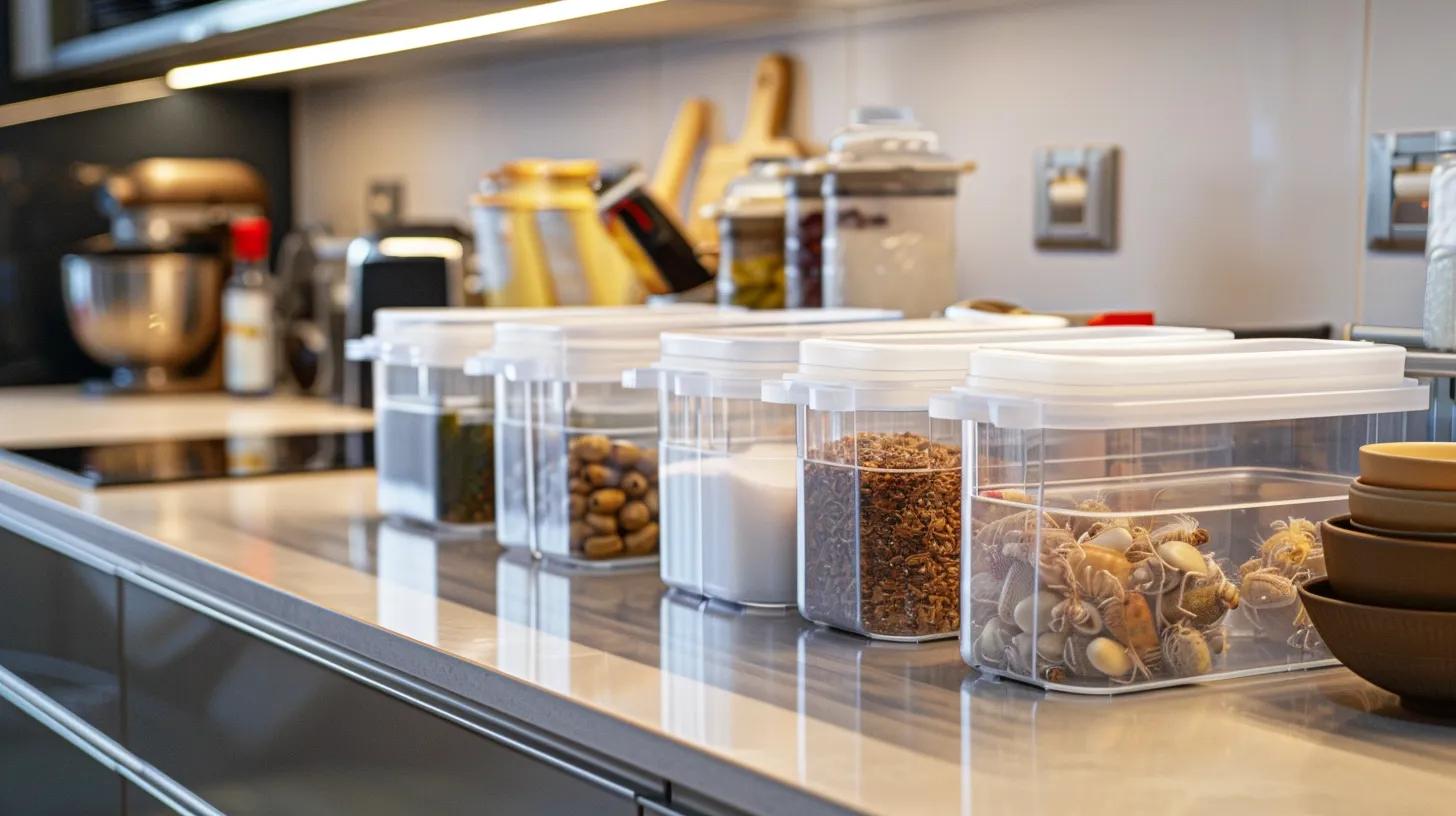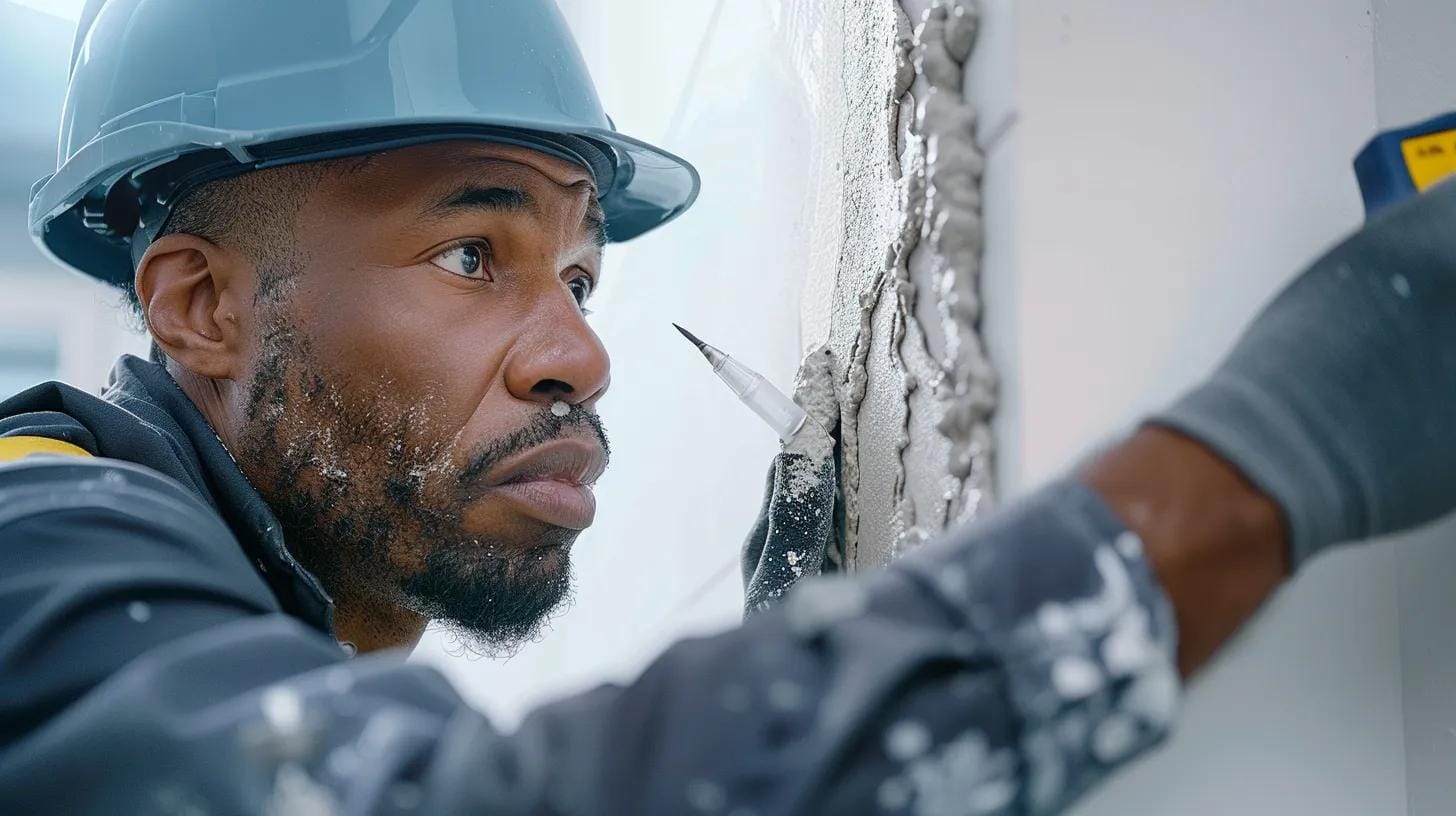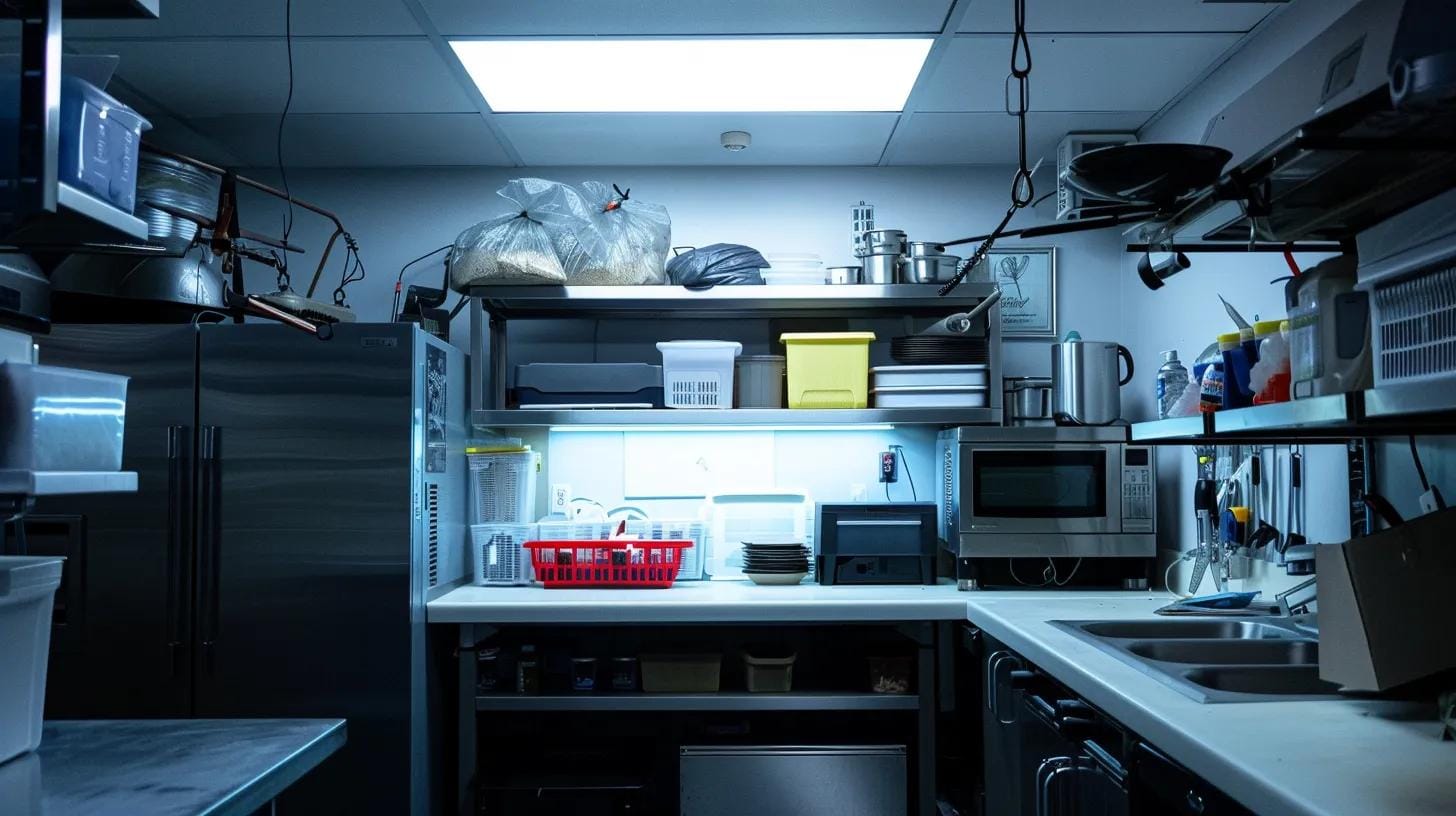Essential Tips to Prevent Roaches From Returning After Professional Extermination Services
In homes and businesses across South Florida, roach infestations can be a persistent and detrimental problem. Even after professional extermination services, many customers remain concerned about the likelihood of roaches making a comeback. Roaches, including the notorious German cockroach and American cockroach species, thrive in environments with excess humidity, accessible food sources, and unchecked moisture – conditions that can also lead to the breeding of mosquitos. Dade Pest Solutions, a trusted local pest control expert in Homestead, Florida, understands that preventing reinfestation is as critical as the initial extermination process. Preventative measures ensure that roaches – agile insects notorious for their odor, rapid reproduction, and strong resilience – do not return to re-establish their nests in your home’s basement, attic, pantry, or other vulnerable areas. In this comprehensive guide, professional pest control techniques and daily maintenance practices are explained in detail so that homeowners can fortify their kitchens and other spaces against roach reinfestation. By implementing structured sanitation protocols, sealing potential entry points, and monitoring susceptible areas, homeowners can actively deter these pests and protect their living environments. Let’s explore the actionable strategies to sustain a roach-free home after professional control services.
Fortify Your Kitchen Against Roach Reinfestation

Professional experts agree that kitchens are a prime target for roach infestations because they provide abundant food sources and moisture, which are ideal for roach reproduction and survival. The first step to prevent roaches from returning is to fortify your kitchen environment. This involves implementing a series of strict food storage and cleanliness practices. Consumers are advised to store food items in sealed containers rather than open bags or boxes; roaches are particularly attracted to crumbs and spills that are left out on countertops. Additionally, cleaning up spills immediately and maintaining a scrupulous cleaning routine around food preparation areas prevent lingering odors that can lure roaches, such as those from grease or food waste.
Implement Strict Food Storage Practices
Ensuring all food products are stored correctly is fundamental for roach control. Place all perishable items inside the refrigerator promptly and keep dry goods in airtight containers. Avoid keeping pet food out for long periods, and seal any snack packages properly. Even seemingly insignificant food scraps can attract roaches, which are known for their opportunistic feeding behavior. Rigorously following these storage practices reduces the available food supply for roaches, making your kitchen a less attractive habitat. A well-organized pantry with clean shelving and frequent inspections can double as a preventative barrier against future infestations.
Maintain Scrupulous Cleanliness in Food Preparation Areas
The kitchen counter, sink, and stovetop demand regular cleaning. Roaches are particularly drawn to greasy residues and leftover particles. Using disinfectants and degreasers on these surfaces minimizes niches where bacteria and food remnants could accumulate. Additionally, wiping down cabinets and undersides of appliances on a routine basis can eliminate hidden moisture and grease that might otherwise serve as sustenance for these pests. A clean kitchen promotes not only roach control but also overall household hygiene.
Address Kitchen Appliance Hygiene Regularly
Kitchen appliances, including microwaves, ovens, refrigerators, and dishwashers, can harbor food particles and moisture. Regularly cleaning these devices’ interiors and exteriors is necessary to remove stains, crumbs, and moisture buildup. Pay close attention to the crevices behind refrigerators and under stoves, as these areas are common hideouts for roaches. Consistently scheduled maintenance – at least once a month – prevents questionable buildup and minimizes potential roach breeding grounds within these appliances.
Manage Kitchen Waste Effectively to Deter Roaches
Roaches are commonly attracted to the waste generated in kitchens. It is essential to dispose of garbage promptly and to use trash cans with tight-fitting lids. Regularly cleaning the bins with disinfectant solutions prevents the accumulation of organic matter and odors. Additionally, schedule frequent garbage disposal routines and consider installing compost bins that are securely closed if you recycle food wastes. By controlling kitchen waste, you can significantly lower the risk of roach reentry.
Key Takeaways: – Store all food in airtight containers and avoid leaving any open food sources. – Clean surfaces and appliances thoroughly and frequently to remove attractants. – Dispose of kitchen waste promptly and maintain clean garbage disposal areas. – Regular appliance maintenance curbs hidden food debris that roaches might use.
Remove Moisture Sources That Attract Roaches Post-Treatment

Roaches, like many pests, are not only attracted to food but also to moisture and humidity. High moisture levels can be found in residential bathrooms, basements, and near sinks, creating optimal conditions for roach reproduction. It is crucial to remove or reduce these moisture sources after professional pest control services. Addressing moisture problems can prevent roach populations from re-establishing themselves in damp environments. Homeowners should prioritize checking and repairing plumbing leaks, ensuring proper ventilation and drying areas prone to condensation, and monitoring humidity with dehumidifiers when necessary.
Repair Leaky Faucets and Pipes Promptly
Even a minor leak from a faucet or a pipe can lead to persistent dampness in the kitchen or bathroom. Leaks are an open invitation to roaches, which use moisture as a survival necessity. Promptly inspecting and repairing any leaky fixtures ensures that unwanted water does not accumulate. Regular maintenance checks, at least monthly, help identify potential issues before they turn into major problems. Utilizing quality replacement parts and professional plumbing services guarantees long-lasting repairs and deters future moisture-related challenges.
Ensure Proper Drainage in Sinks and Showers
Sinks, showers, and bathtubs should have adequate drainage to avoid standing water. Clogged or partially blocked drains can retain water, subsequently encouraging roach activity. Installing drain strainers and frequently cleaning drain traps help sustain free-flowing water. Additionally, periodic flushing of drains using appropriate cleaning agents can prevent buildup and deter sanitary-related odors. Homes with open or improperly maintained drainage systems experience higher humidity levels, making these areas targets for roach infestation.
Manage Humidity Levels Throughout Your Home
Humidity control is a pivotal component in keeping roach populations under control. High humidity, especially in basements and attics, creates an inviting habitat for roaches. Using dehumidifiers in these areas and ensuring sufficient ventilation can dramatically reduce moisture content. Proper insulation and weatherproofing can also guard against external moisture seepage. Monitoring humidity with digital hygrometers provides real-time data, enabling homeowners to take corrective actions when levels spike. This proactive approach not only prevents roach reinfestation but also contributes to overall structural integrity and air quality.
Eliminate Standing Water Inside and Outside
Standing water, whether inside bathtubs, sinks, or in puddles around the house’s exterior, serves as a critical sustenance source for roaches. Eliminating such reservoirs is a must. Inspect areas where water might pool – such as around air conditioners, outdoor drains, and plant saucers – and take immediate remedial action to drain and clean these areas. Rainwater collected in gutters should be directed far from the base of the house, reducing the likelihood of water intrusion into the home. An environment free of standing water significantly reduces the probability of roach return.
Key Takeaways: – Fix leaks and ensure plumbing is in proper condition to reduce moisture. – Maintain clear, unclogged drainage systems to eliminate sitting water. – Use dehumidifiers and proper ventilation in high-humidity areas. – Proactive elimination of standing water zones diminishes roach habitats.
Block Roach Entry Points After Professional Pest Services

After the initial extermination, the next critical step in preventing roach reinfestation is to block their entry points. Roaches can enter buildings through even the smallest openings in walls, foundations, windows, and around utility lines. Sealing these cracks and crevices is essential in limiting the roaches’ access to your indoor environment. Dade Pest Solutions advises a comprehensive inspection of the building’s exterior and interior for potential vulnerabilities and applying appropriate sealing materials like silicone caulk or weather stripping. Blocking entry not only helps in keeping roaches at bay but also contributes to improved energy efficiency in buildings.
Seal Cracks and Crevices in Walls and Foundations
Roaches frequently exploit even minor cracks in walls and foundations as entry routes. Homeowners are urged to conduct systematic inspections of exterior walls, window sills, and foundation edges. After identifying potential entry points, seal these gaps with high-quality sealant. Expanding foam or silicone caulk can effectively block these access points, preventing roaches—and other pests—from infiltrating. Repeating this process around baseboards, corners, and any visible wall openings creates a formidable barrier against re-entry by roaches.
Secure Gaps Around Pipes and Utility Lines
Pipes and other utility lines that penetrate the building envelope often present openings that roaches can exploit. The area around plumbing fixtures both in the kitchen and bathroom should be inspected. Utilizing foam gaskets and sealant around these pipes not only simplifies pest control measures but also contributes to energy conservation by negating drafts. Homeowners should also inspect any outlets around pipes and wiring, applying appropriate reinforcing patches or insulation. Sealing these gaps reduces the likelihood that roaches will find pathways into critical indoor spaces.
Inspect and Repair Window and Door Screens
Windows and doors are common routes for insects, including roaches, to enter a building. Ensuring that screens are intact and well-fitted is essential. Homeowners should inspect window and door screens frequently for rips or loose fittings. Immediate repairs or replacements are necessary to maintain a secure barrier. Beyond screens, door sweeps and weatherstripping further obstruct roach entry. Effective door management ensures that even brief openings do not become gateways for roaches seeking shelter indoors.
Check Items Brought Into Your Home for Stowaways
Roaches are notorious for hitching a ride on grocery bags, used furniture, or second-hand items. Before introducing any previously stored items into your home, it is wise to inspect them thoroughly for roaches or eggs. Vacuuming or washing these items before bringing them indoors minimizes the risk of inadvertently reintroducing pests. Establishing good quarantine practices for new items can substantially mitigate roach reinfestation risks. By keeping vigilant about any potential stowaways, homeowners maintain a robust defensive barrier post-extermination.
Key Takeaways: – Sealing all exterior and interior cracks drastically reduces roach entry. – Address gaps around pipes and utility installations as potential pest routes. – Regularly inspect and repair window screens and door sweeps. – Preventing stowaways on new or second-hand items minimizes inadvertent reinfestation.
Establish Consistent Monitoring to Stop Roaches From Coming Back

Long-term roach prevention is not a one-time effort but requires continuous monitoring. Even after thorough sealing and moisture control, it is vital for homeowners to establish consistent monitoring practices in high-risk areas. Regular visual inspections provide early warning signs of roach activity, allowing prompt countermeasures. Behavioral cues such as droppings, shed skins, egg cases, or a foul odor should trigger immediate remedial actions. Additionally, using roach traps strategically in kitchens, bathrooms, and basements helps capture intruders, thereby serving as both a diagnostic and a control tool. The incorporation of technology like digital monitors, in conjunction with routine manual checks, ensures that re-infestations are detected and remedied before populations can grow.
Conduct Regular Visual Inspections in Prone Areas
Routine checks in inspection-prone areas—such as under sinks, behind appliances, in cabinets, and in corners of dark rooms—allow homeowners to spot early signs of roaches. Visual inspections should be conducted at least bi-monthly. During each inspection, look for droppings, fecal smears, shed wings, and egg cases. These indicators provide evidence of even small roach populations returning. Early intervention based on these observations can prevent a complete re-establishment of the pests. This diligent monitoring can be integrated into your regular home maintenance schedule for continuous protection.
Utilize Roach Traps for Early Warning Signs
Sticky traps and bait stations are effective tools for capturing roaches and serving as an early detection method. Strategically place these traps in areas with high chances of roach activity, such as near food storage locations, along baseboards, or in dark nooks. Regularly check and replace the traps to maintain their efficacy. The number of catches in the traps can provide quantitative data on roach pressure in your home. This information is invaluable as it indicates if additional interventions or a follow-up professional service is necessary. Integrating these traps with visual inspections creates a comprehensive monitoring system.
Recognize Telltale Signs of Renewed Roach Activity
Awareness and recognition of common roach signs are critical. Homeowners should be familiar with the appearance of roach droppings, the distinctive musty odor, and the physical remnants of shed skins. Noticing even a small number of these signs should prompt immediate actions such as increasing cleaning efforts or calling in an expert for further evaluation. Familiarity with these indicators, reinforced by regular monitoring, is key to preventing the resurgence of roach infestations in your home. Staying alert and responsive ensures that any signs of renewed activity are nipped in the bud.
Key Takeaways: – Regular inspections and trap monitoring are essential components of long-term roach control. – Visual cues such as droppings, shed skins, and odors serve as early warning signs. – Placing traps in strategic locations helps quantify roach presence and informs follow-up actions. – Proactive monitoring enables rapid intervention, preventing small infestations from becoming major issues.
Your Active Role in Preventing Roaches After Professional Control Services

The success of professional extermination services ultimately depends on the homeowner’s active role in maintaining a roach-free environment. After experts have applied their treatments, it is imperative that residents adhere to recommended post-treatment guidelines. Continuous preventive actions not only ensure that roaches remain at bay but also enhance the long-term benefits of professional pest control measures. Homeowners must be proactive by implementing routine cleaning, monitoring, and maintenance practices to support the ongoing suppression of roach populations.
Adhere to Post-Extermination Guidelines From Your Provider
Following the detailed instructions provided by the pest control professional is crucial. This may include avoiding certain cleaning agents that could interfere with residual pesticide applications or scheduling follow-up visits to confirm the absence of roaches. Homeowners are urged to review and implement every guideline provided. This includes not just immediate cleaning but also adjustments in daily habits that reduce attractive conditions for roaches. When these guidelines are consistently followed, the success rate of the professional treatment increases significantly, laying the groundwork for a pest-free future.
Communicate Any Early Concerns to Pest Control Experts
If signs of roach activity reappear, even in small numbers, it is important to contact your pest control provider immediately. Timely communication allows professionals to assess the situation and apply additional treatments if necessary. Keeping a record of any unusual activity, such as increased sightings or droppings, can facilitate a more targeted response. An active partnership between the homeowner and pest control experts ensures that both parties are aware of evolving conditions, and adjustments can be made swiftly. This collaborative approach is essential for long-term success.
Understand How Your Actions Determine if Roaches Return After Professional Control Services
The persistent nature of roaches means that neglecting preventative measures may lead to rapid reinfestation. Homeowners need to understand that their daily actions—like proper sanitation, moisture control, and monitoring—directly influence whether roaches manage to return. Evaluating and improving these habits based on expert advice helps maintain a low-risk environment. For instance, if clutter and food remnants are consistently removed, roaches will struggle to locate sustenance and breeding sites. It is a constant effort that requires vigilance and commitment.
Commit to Long-Term Prevention Strategies for Lasting Results
Long-term prevention is a comprehensive approach that goes beyond the immediate post-extermination period. Establishing a routine that incorporates regular cleaning, periodic professional inspections, and upgrades to home maintenance is vital. This might include scheduling quarterly inspections with your pest management provider, investing in dehumidifiers, or sealing additional entry points identified over time. Consistent and proactive measures will significantly reduce the likelihood of roach reinfestation. Homeowners who adopt these long-term strategies are rewarded with a sustained, roach-free indoor environment.
Key Takeaways: – Strict adherence to the post-extermination guidelines increases treatment efficacy. – Early communication with pest professionals allows for timely re-intervention. – Homeowner actions, like cleanliness and maintenance, directly impact roach return. – Long-term prevention requires consistent, routine practices and periodic professional oversight.
Cultivate Lasting Habits to Keep Roaches Away Permanently

Preventing roaches from becoming pests is not a one-time effort; it requires the cultivation of long-lasting habits and a proactive preventive mindset. Creating an environment inhospitable to roaches involves both routine housekeeping and structural changes. Habits that inhibit clutter and food residue accumulation, combined with regular yard and garden maintenance, work synergistically to deter roaches. For example, reducing potential hiding spots in living spaces by managing clutter and storage areas creates a more visible environment in which roaches find it difficult to conceal themselves from detection and elimination. Effective pest control integrates daily personal discipline with periodic professional oversight, ensuring that any potential breach in defenses is promptly addressed.
Declutter Living Spaces to Reduce Hiding Spots
Roaches thrive in environments with ample clutter, as it offers them many places to hide and breed. To reduce these hiding spots, homeowners should regularly declutter living areas, particularly around baseboards, behind furniture, and in storage spaces. Items such as cardboard boxes, newspapers, and unused clutter should be discarded or organized appropriately. The process of decluttering not only improves overall living conditions but also eliminates locations where roaches could nest unnoticed. A well-organized home is less inviting to roaches, and routine decluttering is a powerful preventive measure.
Maintain Yard and Garden Tidiness to Discourage Pests
Pest control extends beyond the confines of the home. A neat outdoor environment helps prevent roaches from entering through doorways and windows. Regular lawn maintenance, trimming overgrown shrubs, and clearing debris around the foundation reduce entry points and limit roach harborage. Additionally, keeping the outdoor environment tidy minimizes damp, shaded areas that roaches favor. Homeowners should consider scheduled yard clean-ups as part of their overall pest management strategy. By controlling the outdoor habitat, residents create a continuous barrier that discourages roaches from making a move from outside to indoor spaces.
Educate Household Members on Roach Prevention Measures
Effective prevention habits require the participation of every household member. Educating family members on the best practices—such as not leaving food out, promptly washing dishes, and maintaining proper cleanliness—creates a unified approach to roach control. Clear communication about the importance of these preventive measures ensures that everyone is vigilant. Periodic reminders and setting household cleaning schedules can reinforce these habits. When all members of the household are informed and engaged, the entire environment is more likely to remain free from roach attractants.
Schedule Periodic Professional Re-Inspections if Needed
Even with diligent daily practices, periodic professional re-inspections offer an extra layer of defense. Regular check-ups by a trusted pest control service can catch early signs of potential infestations and address them before they escalate. Homeowners should consider scheduling re-inspections on a semi-annual basis to ensure that their preventive measures remain effective and that no vulnerabilities have developed over time. These proactive assessments not only provide peace of mind but also contribute to the continuous improvement of home maintenance practices.
Key Takeaways: – Decluttering and maintaining organized spaces remove potential roach hiding spots. – Outdoor tidiness plays an essential role in preventing roach migration indoors. – Household education is critical to ensure all family members contribute to prevention. – Routine re-inspections by professionals help keep the roach risk at a minimum.
Conclusion
In conclusion, preventing roaches from returning after professional extermination services requires a multifaceted approach that focuses on hygiene, moisture control, barrier establishment, and proactive monitoring. Homeowners must fortify their kitchens through strict food storage practices and diligent cleaning, remove moisture sources that serve as roach attractants, and block all potential roach entry points by sealing cracks and repairing damaged screens. Moreover, by establishing consistent monitoring routines and actively educating household members on prevention strategies, residents can significantly decrease the likelihood of reinfestation. Dade Pest Solutions encourages embracing these proactive measures and scheduling periodic professional assistance to maintain a safe, roach-free environment for long-term comfort and peace of mind.
Frequently Asked Questions
Q: How important is kitchen sanitation in preventing roach reinfestation? A: Kitchen sanitation is critical because roaches are attracted to food, moisture, and clutter. Regularly cleaning surfaces, storing food in sealed containers, and managing waste properly minimizes attractants and reduces the chance of roaches returning.
Q: What role does moisture control play in roach prevention? A: Moisture control is essential as roaches require humidity to survive. By repairing leaks, ensuring proper drainage, and using dehumidifiers, homeowners reduce the damp environments that roaches thrive in, thereby lowering their chances of reinfestation.
Q: Why is sealing entry points effective in preventing roach return? A: Sealing entry points removes the physical paths roaches use to enter buildings. Gaps in walls, around pipes, or through window screens act as doorways for roaches. Blocking these gaps prevents new roaches from infiltrating, complementing other preventive measures.
Q: How can periodic re-inspections help maintain a roach-free environment? A: Periodic re-inspections allow professionals to detect early signs of roach activity that might otherwise be overlooked. Regular assessments ensure that any potential issues are promptly addressed, reinforcing the home’s defenses and maintaining long-term control.
Q: What are the best habits to cultivate for long-term roach prevention? A: The best habits include consistent decluttering, maintaining a clean and dry environment, managing outdoor tidiness, educating everyone in the household on preventative measures, and scheduling periodic professional inspections. These habits create a comprehensive barrier against roach re-infestation.
Final Thoughts
Preventing roaches from returning after professional extermination requires persistence, adherence to best practices, and an active role by the homeowner. By fortifying kitchens, eliminating moisture, sealing entry points, and consistently monitoring vulnerable areas, households create an environment where roaches cannot thrive. Implementing these practical and sustainable strategies ensures that the effectiveness of professional treatments is maintained over the long term. Homeowners who commit to these proactive measures enjoy a safe, pest-free living space and peace of mind.
The table above summarizes key prevention strategies along with their benefits and how to verify their effectiveness. Tracking these areas helps maintain a well-protected environment long after a professional extermination.

17 Years of Pest Control Experience Founder and Owner of Dade Pest Solutions Proud Resident of South Florida
Shaun Judy, a dedicated South Florida native, is the founder and driving force behind Dade Pest Solutions. With over 17 years of hands-on experience in the pest control industry, Shaun has built a reputation for reliability, results, and real local knowledge. His journey began with a deep commitment to protecting homes from pests using proven methods and innovative solutions. Raised with a strong work ethic and a passion for service, Shaun treats every property as if it were his own—delivering expert care with a personal touch.

